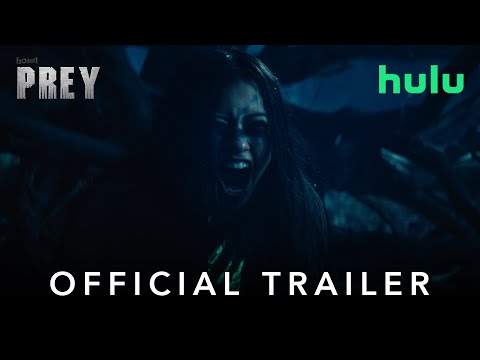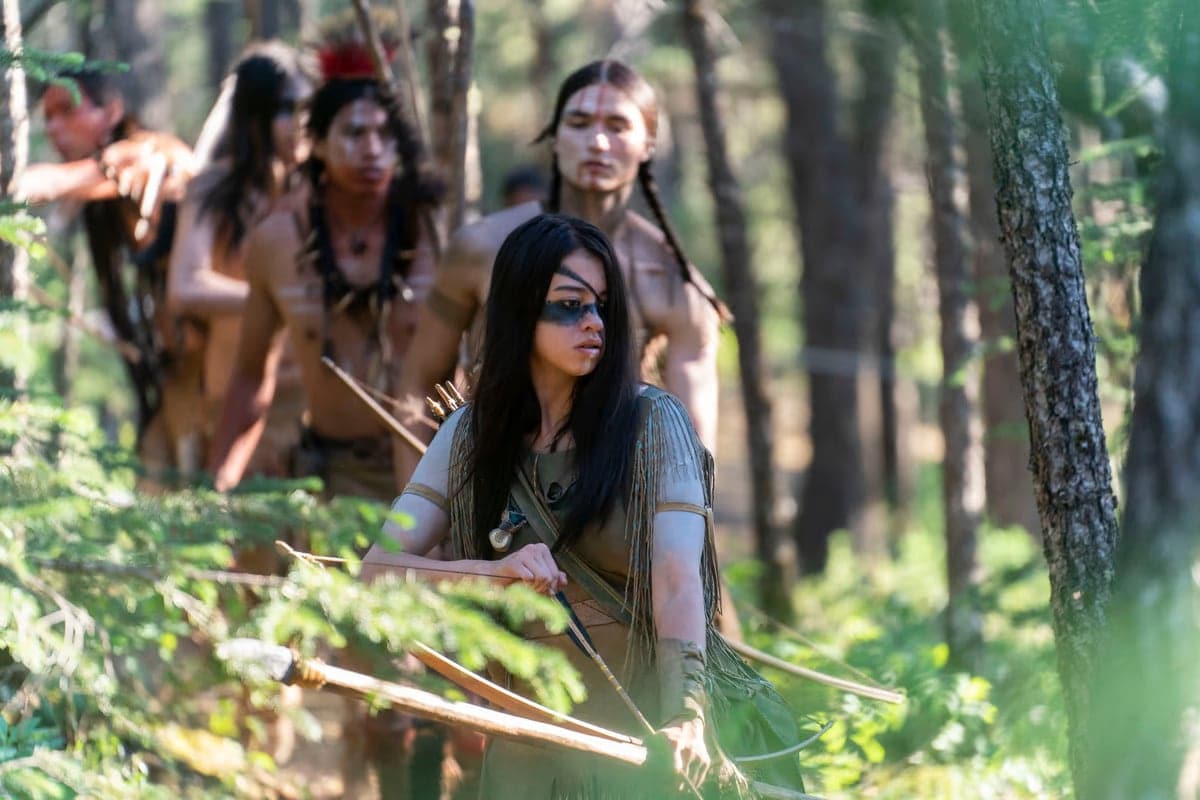The governing premise of the Predator movies—essentially The Most Dangerous Game with a hulking alien in place of a rich hunter—is ripe for genre kicks. So ripe, in fact, that it’s rather astonishing to consider that John McTiernan’s 1987 original is the only Predator that’s worth a damn. This scenario could allow filmmakers to go wild—imagining the alien in any time period matched against any type of warrior—though the Predator sequels often embrace the humdrum action-movie-with-a-monster status quo.
Dan Trachtenberg’s Prey deserves credit, then, for at least trying to shake things up. The film is set 300 years in the past, in the Highland Plains of the Comanche nation, with a protagonist, Naru (Amber Midthunder), who has a problem redolent of many a Disney princess. The Comanche women, as Prey has it, are supposed to stay home as tenders of meals and clothes while the men hunt. However, Naru insists she’s capable of being as good a hunter as the men.
While hunting a large cat with other warriors of her tribe, Naru claims that something else is in their midst. Of course, she’s right: A relative of the monster that will plague Arnold Schwarzenegger’s mercenary centuries in the future lurks nearby, armed and ready to party. Now, the potential annihilation of Naru’s tribe is an opportunity for her to come of age.
In a perfect world, this premise suggests a fusion of the kinetics of the original Predator with, say, the rugged western verisimilitude of Michael Mann’s The Last of the Mohicans or even the overheated survival-of-the-fittest madness of Mel Gibson’s Apocalypto. But kinetics, verisimilitude, and madness are clearly not Trachtenberg’s strong suits.

The Comanche of this film suggest actors dressed up for a school play, in outfits that appear to be pressed, while speaking perfect English to the point of nearly indulging in contemporary slang. Least forgivably, Trachtenberg treats the Predator with dull matter-of-factness. Trachtenberg too often shows the creature out in the open, in his pseudo-invisibility cloak, tussling with CGI-ed animals. Forget The Last of the Mohicans or Apocalypto or whichever tangy macho hallmark you might imagine vicariously in order to escape this slog, as Prey inadvertently suggests Predator by way of Jon Favreau’s The Jungle Book.
Without muscular filmmaking to prop it up, Prey collapses into a mess of anonymous action sequences and half-baked symbolism. Trachtenberg and screenwriter Patrick Aison take the motif of predators and prey very literally, lingering on fake-looking animals as they stalk and kill one another, and eventually proffering the Predator’s ultraviolent mischief as a metaphor for the colonialism that would wipe out much of the Native American population.
This metaphor isn’t inherently bad, but Trachtenberg doesn’t follow through with it. Evil white people pop up to die as grist for the mill and that’s about it, as the tension between the Comanche and the European invaders is, at best, rudimentarily mined. If this sounds like too much to ask of a genre film, see J.T. Petty’s unjustly obscure The Burrowers or the original Predator, which threw cultural archetypes into a psychosocial cauldron.
Though McTiernan’s Predator plays its action-horror tropes straight, it pivots on a great joke, having Schwarzenegger, at the height of his fame as a symbol of American might, meeting his match in an even bigger colossus with an even more bottomless need to exert force. Throughout, McTiernan parodies Schwarzenegger’s invincible image only to reaffirm it anyway, suggesting that existence is a Hobbesian crapshoot. This sensibility, common of American action movies of the ’80s, feels authentically volatile in our skittish modern culture, as contemporary, woefully self-conscious genre offerings can’t hope to capture such anarchy. Prey proves to be an apropos title, then, as the film is cowed by its predecessor.
Since 2001, we've brought you uncompromising, candid takes on the world of film, music, television, video games, theater, and more. Independently owned and operated publications like Slant have been hit hard in recent years, but we’re committed to keeping our content free and accessible—meaning no paywalls or fees.
If you like what we do, please consider subscribing to our Patreon or making a donation.







100% Agree. Major Dissapointment
I do not understand the praise for this one. Great cast, great setting, a great director… with a boring script.